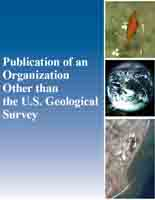
Predictive modeling of forest cover type and tree canopy height in the central Rocky Mountains of Utah
Links
- The Publications Warehouse does not have links to digital versions of this publication at this time
- Download citation as: RIS | Dublin Core
Abstract
Maps of forest cover type and canopy height are needed for LANDFIRE, a multi-scale fire risk assessment project designed to generate intermediate-resolution data of vegetation and fire fuel characteristics for the U.S. Here we describe an evaluation study in the central Rockies of Utah, comparing tree-based methods, multivariate adaptive regression splines (MARS), and a hybrid method for mapping forest cover and canopy height on the basis of more than 2,000 forest inventory ground plots in the seven million ha mapping zone. The two forest attributes were modeled as functions of a variety of predictor variables, including: Landsat 7 Enhanced Thematic Mapper Plus (ETM+) images acquired at three different seasons; Tasseled-cap brightness, greenness, and wetness; a forest type group map; and topographic variables derived from Digital Elevation Models (DEMs); and other ancillary variables. The hybrid modeling approach showed a marked increase in overall and within forest cover type accuracies, outperforming the tree-based and MARS approaches. Little difference was seen in global performance measures of forest canopy height models, but patterns in residual plots resulting from different modeling approaches raise questions about utility of height predictions in different applications.
Study Area
| Publication type | Conference Paper |
|---|---|
| Publication Subtype | Conference Paper |
| Title | Predictive modeling of forest cover type and tree canopy height in the central Rocky Mountains of Utah |
| Year Published | 2003 |
| Language | English |
| Publisher | American Society for Photogrammetry and Remote Sensing |
| Contributing office(s) | Earth Resources Observation and Science (EROS) Center |
| Description | 11 p. |
| Larger Work Type | Book |
| Larger Work Subtype | Conference publication |
| Larger Work Title | Technology—Converging at the top of the world |
| Country | United States |
| State | Idaho, Utah, Wyoming |

